The Dulle Korean Trail
Korea
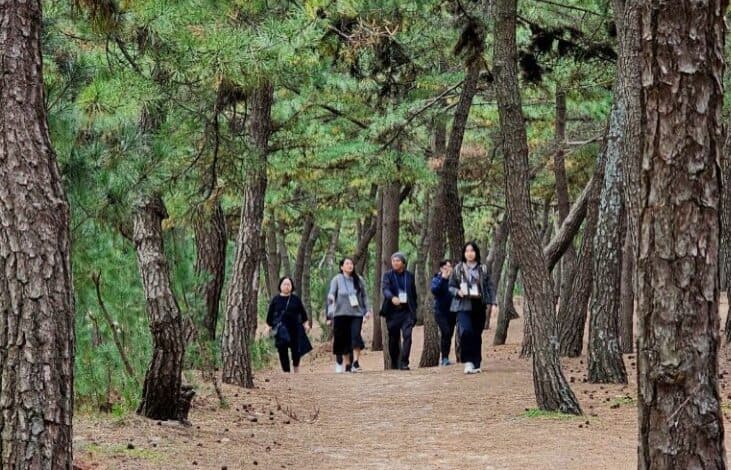
I had never heard of the Korea Dulle before, and to be honest, I knew very little about South Korea either. My knowledge basically began with the 1988 Summer Olympics in Seoul and ended with the 2018 winter Olympics held in the eastern county of Pyeongchang-gun, with very little in between. I had heard of K-pop but never made the connection between a style of music and the fact that the K stood for Korea.
So when I was invited to visit South Korea to experience the newly completed Korea Dulle Trail, I decided it was time to expand my knowledge.
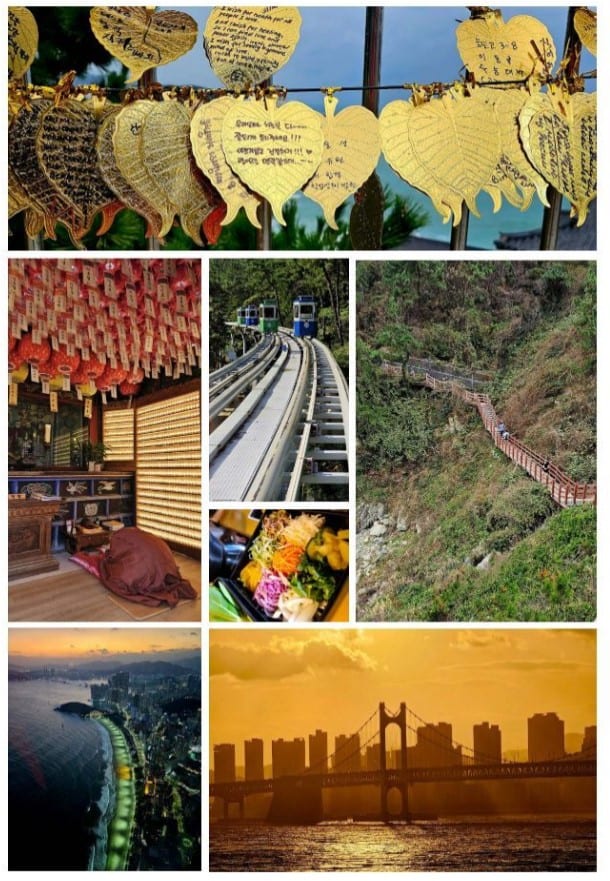
To get up to speed I referred to google for a little background information and discovered that South Korea is officially called the Republic of Korea, or ROK for short and as well as bringing us K-pop, LG Electronics and Samsung also hail from this part of the world.
Its land area is less than half that of NZ yet its population is over 10 times greater than here.
On paper, South Korea and New Zealand share many similarities: comparable temperature ranges, high quality of life, and a harmony of religious diversity. But where Korea stands apart is in its rich and ancient history, dating back over 300,000 years. This cultural depth, initially shaped by Chinese influence, has blossomed into a distinctly Korean identity.

South Korea can be divided into four general regions: an eastern region of high mountain ranges and narrow coastal plains; a western region of broad coastal plains, river basins, and rolling hills; a southwestern region of mountains and valleys; and a southeastern region dominated by the broad basin of the Nakdong River.
We were invited as a guest of Korea Tourism Organisation in Sydney to experience a section of the 4,500km Korea Dulle Trail. If you are looking for a blend of history, health, culture and food diversity, along with a touch of innovation, then the Dulle Trail in South Korea is the place to go.
The Ministry of Culture, Sport, and Tourism, along with Korea Tourism, developed the trail. It is important to note that the collaboration of the trail’s development was not just with the tourist in mind. The vision was to create “a path of rediscovery” where locals could use the trail in their daily lives, to walk at their leisure, to escape the hustle and bustle of their city lives and to visit different regions, while tourist could incorporate a small or a large section in their travel itinerary.
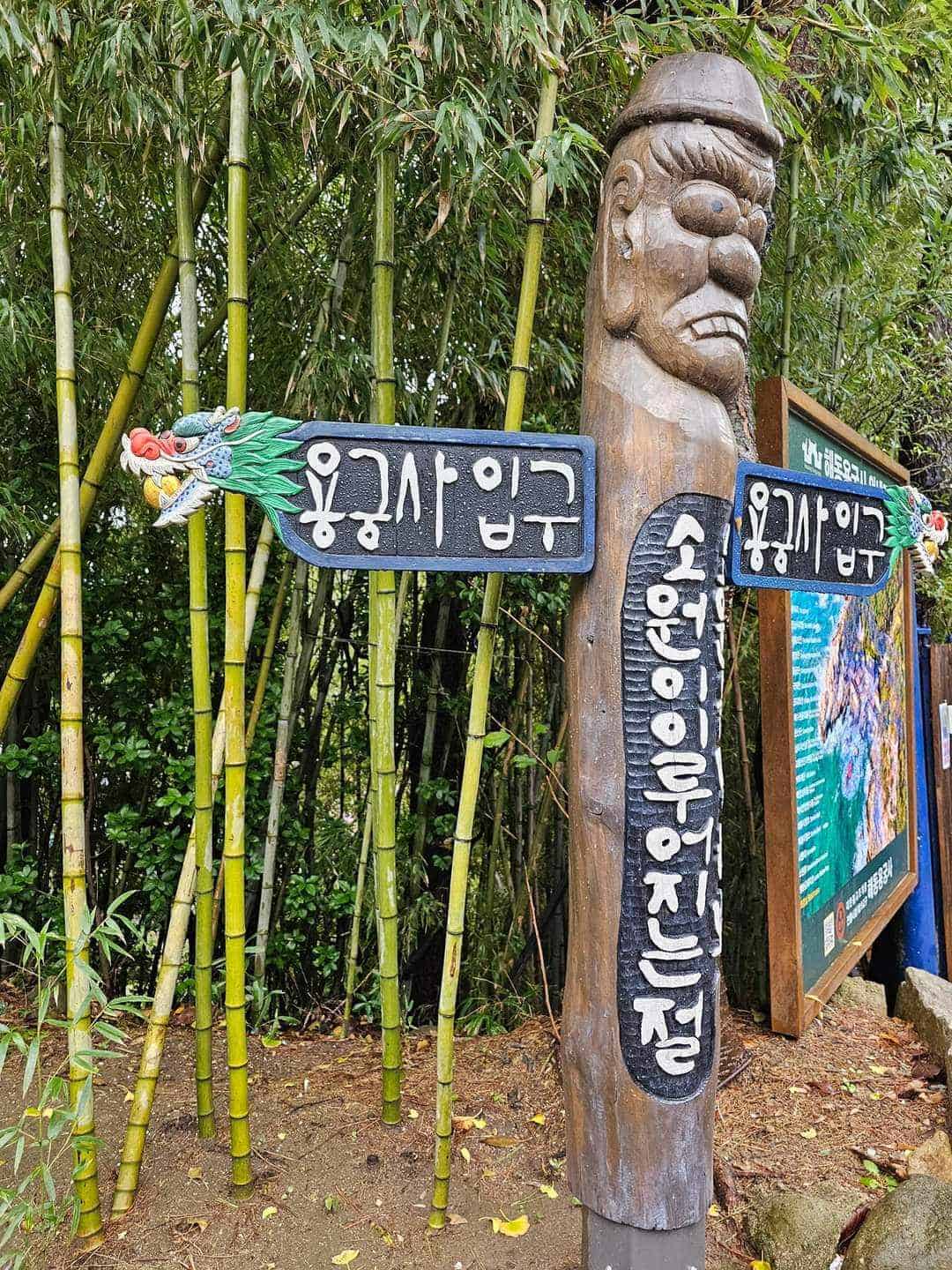
The Dulle Trail is a 4,500km walking trail that circumnavigates South Korea,
connecting the outer edges of Korea. There are four sections, and 284 numbered courses make up the Korea Dulle Trail. Each of the four sections offers a blend of ocean, city, history, and culture; the Haeparang Trail in the east, the Namparang Trail in the South, the Seohaerang Trail in the West and DMZ Peace Trail in the North.
The idea is to walk as much or as little of the trial and in any order. It’s not necessarily about walking the whole 4,500km in one hit, it’s more about choosing the path that best suits. For some this may just be a stroll over the weekend with family and for others it a pilgrim from one place to the next.
Our invitation was to join a week-long experience in South Korea, and with over 4500kms to cover we were obviously not going to take it all in so our itinerary offered a cross section of what is available and with limited time, we were visiting a few places on the east coast, which offered a really diverse insight into what South Korea had to offer.

HAEPARANG TRAIL – East Coast
This is known as the path of contemplation, with a total of 50 courses cover 750 km from sunrise park in Busan to the Unification Observatory in Goseong, Gangwon. It follows the stunning coastal path along the east coast, featuring the blue sea (Perang).
Our journey began in Sokcho, a four hour drive from the Incheon International Airport, where we explored the 7.1km Yeonglang Lake loop on e-scooters. Despite it being late in October the air was still warm and we were fortunate that autumn bought with it pathways laden with golden leaves.
Our first taste of the Haeparang Trail began with course 45, a 17.6km trail. We started at what felt like the edge of Sokcho, a major port city with a population of just over 80,000 people. In the distance we could see the high rise buildings of a modern city but our trail took us on interesting path. At one point we boarded the Abai Gaetbae, a non-motorised ferry (where you can help the boatman pull the cables to get across to the other side) that took us across to the quaint Abai Village, a placed steeped in history. We crossed bridges, walked across golden sands and along boardwalks, all the while bypassing the city lights.
A day later we found ourselves back on the trail, Course 39, near Gangneung, a major economic centre on the East Coast only an hour south from Sokcho. The 15.8km trail began crossing Solbaram Bridge to the infamous “coffee street”. Jam packed with themed coffee shops, that stocked everything from pastries, deli treats, boutique roasters and signature coffees, a great way to start any walk. The trail then follows the pine forest alongside Anmokhaebyeon Beach littered with bronze statues, local wildlife (squirrels) and exercise stations before coming to the picturesque Lake Gueongpoho where you’ll find the Gyeongpodae Pavillion, which contains 16th century works by Yulgok and 11th century poems.
Our day ended in ClubD Oasis Spa Wellness centre, the first and only urban wellness hot spring in Busan, and the 8th national wellness hot spring in Korea. Each floor at ClubD Oasis is dedicated to a specific theme. The fourth floor, for example, houses its indoor and outdoor waterpark, the fifth floor features Cheongsudang, an outdoor bath facility that resembles those found in Japan with saunas and hot stones occupying the entire sixth floor.
Dressed in matching outfits (they call it a uniform) it was a great way to end the day.
Our final day saw us up early to visit the Haedong Yonggungsa Temple, a Buddhist temple in Gijang-gun, Busan, South Korea. First built in 1376, this picturesque temple perched on the edge of the ocean. As well as a tourist hot spot, it’s also a gathering place for Buddhist worship and tradition.
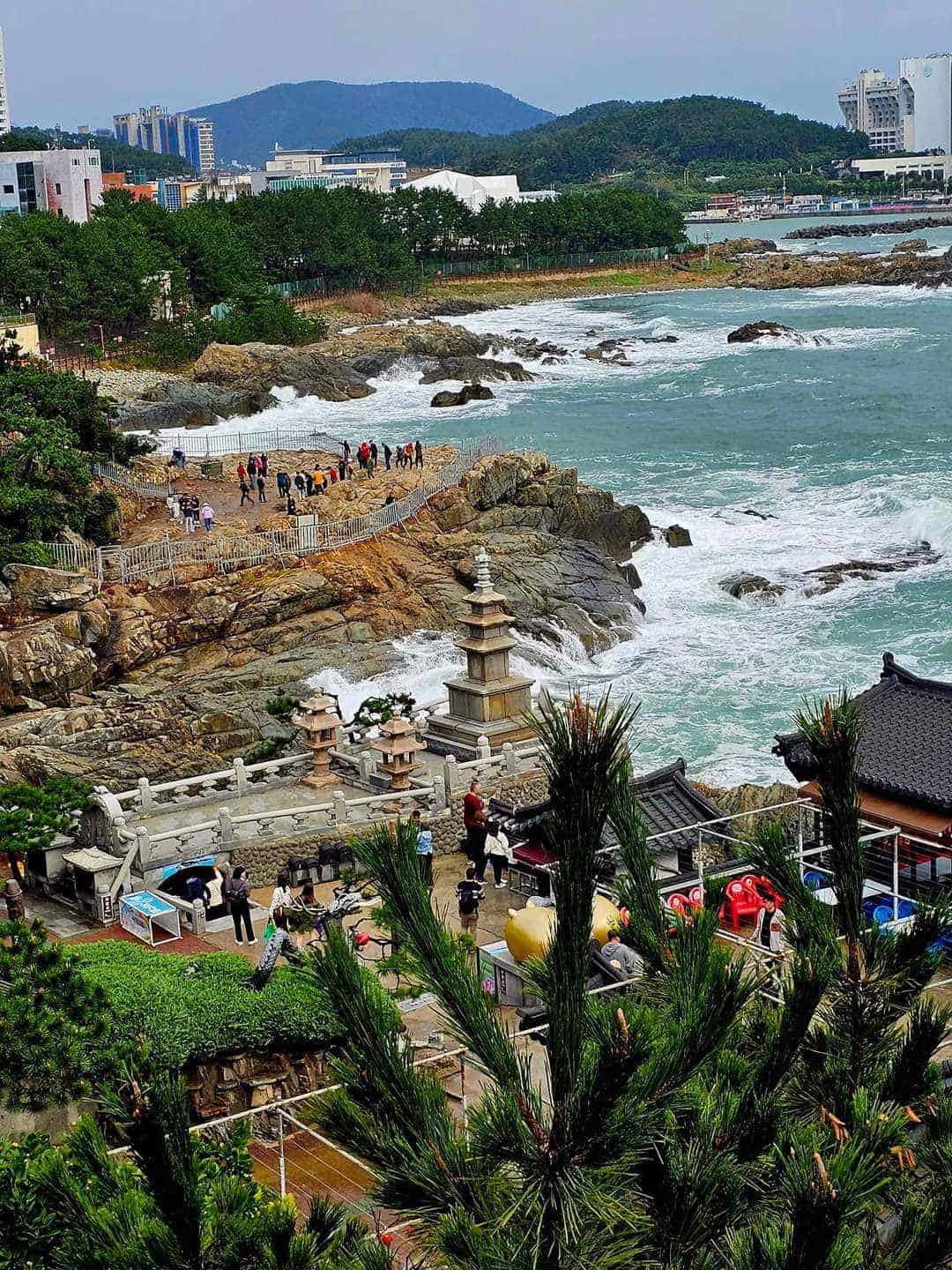
We next caught the Haeundae Sky Capsule is a 2.3km elevated railway that meanders along the coastal route from Cheongsapo to Mipo before heading to Course one of the Haeparang Trail.
The 16.9km trail provided the most challenging walking, and the most natural scenery. The trail followed the undulating coastline across boardwalks, up and down stairs and through natural undergrowth. For me personally it was the most enjoyable day. In places the boardwalk clung to the cliff face and the city was just a blurred vision in the distance. As the rugged ocean trail came to an end, we came to the shoe air-cleaning station, a way of cleaning your shoes without wasting water, next to the Dongsaengmal Observatory. From here we joined the walkway around APEC House, known for its incredible sunsets.
Our day ended with a walk along Haeundae Beach, one of South Korea’s most popular beaches. The golden sands host a variety of local street performers, cafes and restaurants and families just enjoying the evening before ascending Busan X The Sky, the second highest building in Korea at 411.6 meters. It provided us with a panoramic view of the landscape as well as a perspective of where we had come from that day.
Other trails include:
NAMPERANG TRAIL – South Coast
Namparang-gil means “a path to walk along the blue sea of the south.” 1470 km of trails consisting of 90 courses that follow the southern coast from Oryukido sunrise park in Busan to Ttangkkeut village in Haenam. Beautiful ocean views, big cities and the quant charm of farming and fishing villages.
SEOHAERANG TRAIL – West Coast
1800km with 109 courses that connects Ttangkkeut (Lands’ End) Tower in Haenam to Ganghwa in Incheon. It means the trail where the people walk with (rang) the west sea (pado for waves) on the trail you will encounter the vast wide tidal flats that have been designated a UNESCO site along with sunsets, history, religion, and cultural exchanges.
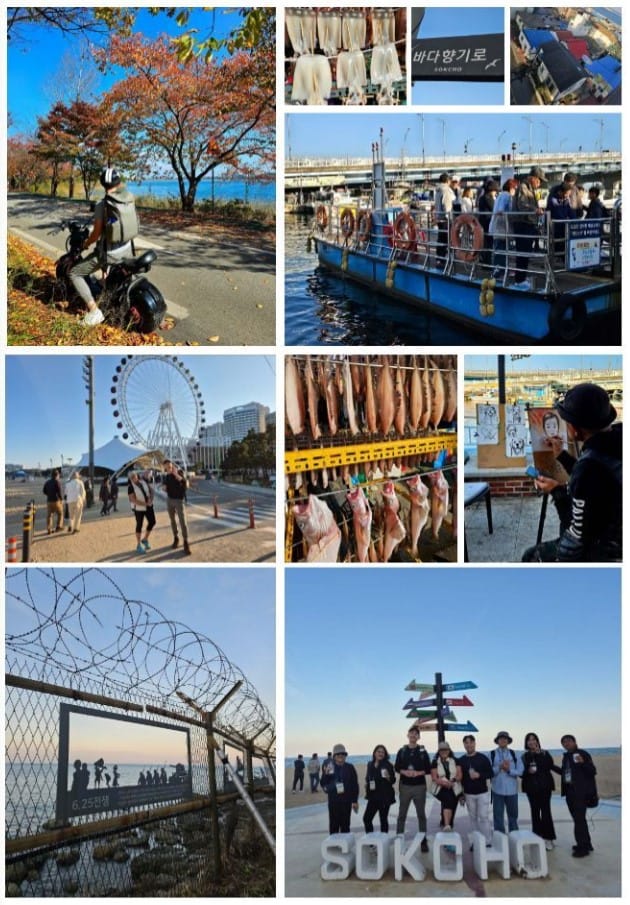
DMZ PEACE TRAIL
The DMZ Peace trail boasts the cleanest environment on the Korean peninsula. It’s a reflection trail for peace and unification. 510 km with 35 courses. Pass through front-line villages, battlefields, plains, rivers, and mountainous terrain. The Peace Trail is divided into a main route which can be visited freely and a theme route for which you must make a reservation.
Be sure to download the Durunubi App, which allows you to follow your trail and collect stamps upon completion. The courses are clearly numbered, and you scan in and out, and get updated information on everything from the route to accommodation, food, and points of interest.
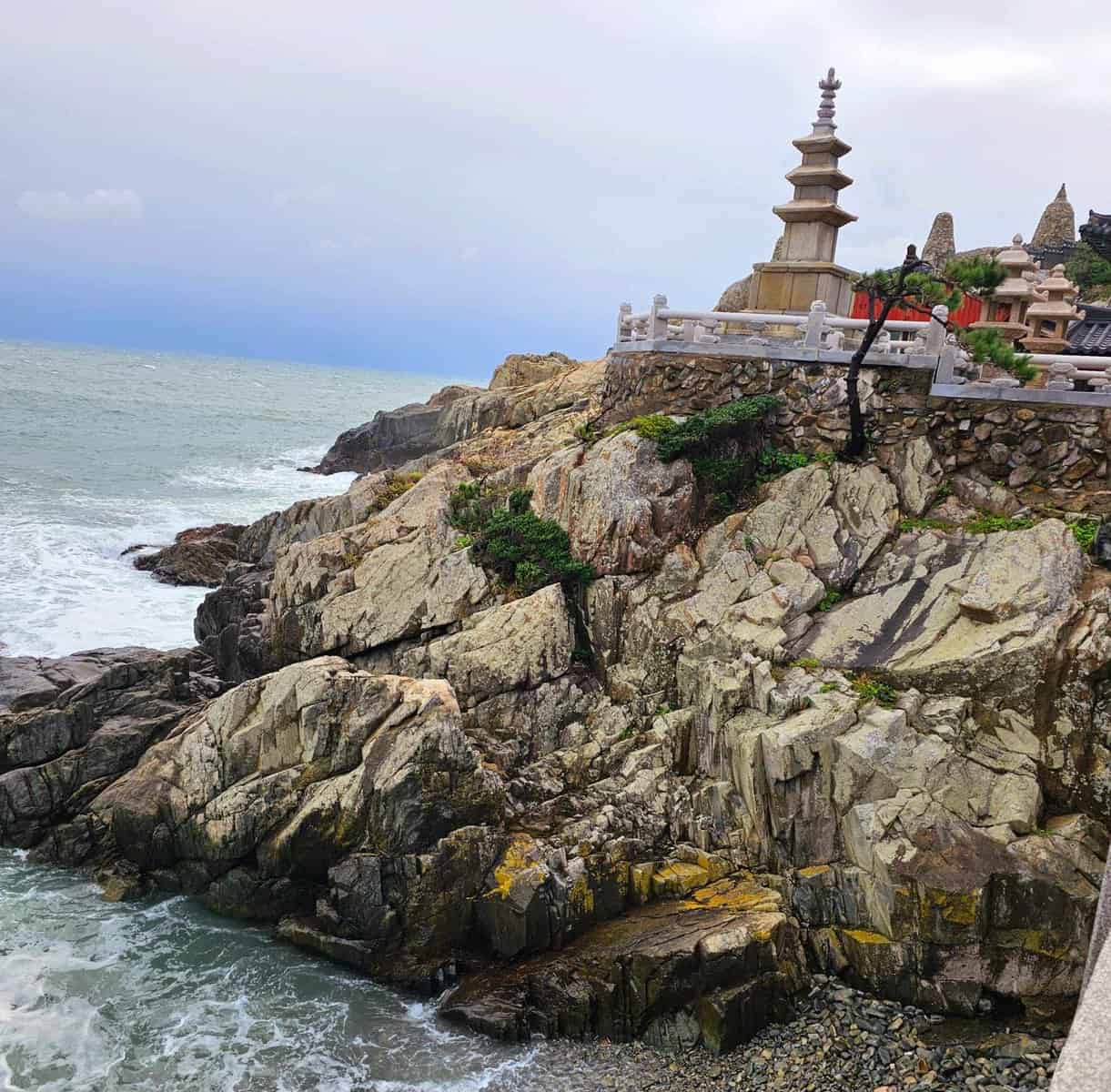
KOREAN CUISINE
No story on South Korea would be complete without mentioning food.
South Korean food is a vibrant tapestry of bold flavours, communal dining, and age-old traditions that make every meal an adventure. From sizzling hot pots to delicate pickled side dishes, Korean cuisine strikes a balance between the robust and the refined.
Barbecue is popular with succulent cuts of beef and pork sizzling on a tabletop grill, wrapped in crisp lettuce with garlic, ssamjang (spicy bean paste), and a dash of rice—a bite-sized explosion of taste and texture.
Then there’s bibimbap, a colourful mix of rice, vegetables, meat, and a perfectly fried egg, all drizzled with spicy gochujang.
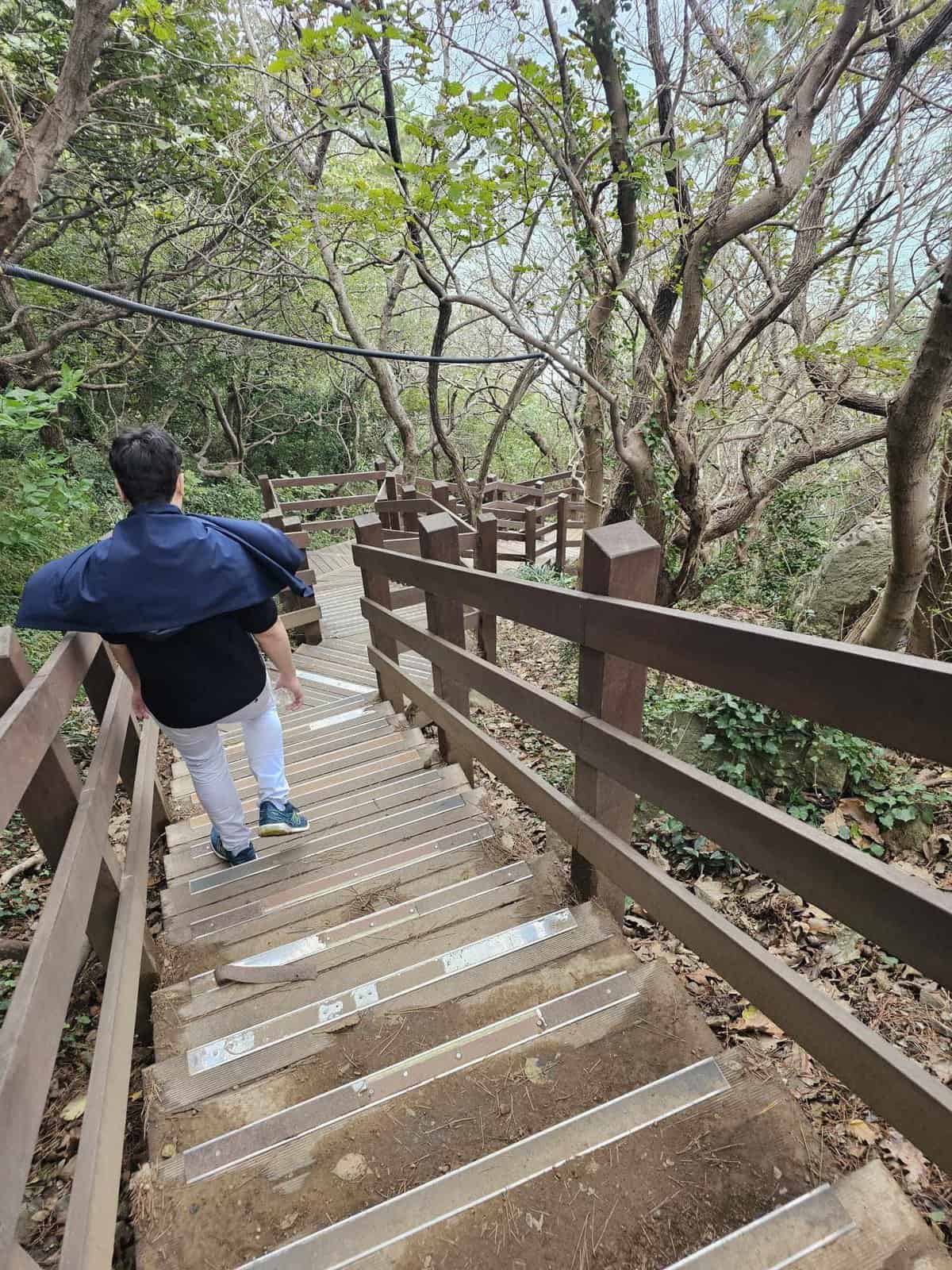
Korean food also excels in comfort dishes like soft tofu stews and piping-hot bowls of ramen, delivering warmth with every spoonful. And the snacks? From spicy tteokbokki (rice cakes) to crispy fried chicken slathered in sweet chili sauce, street food culture is a feast of its own. A feature on South Korean food is the number of small bowls of condiments for personal choice.
Ultimately, Korean cuisine is more than just a meal—it’s an experience. It’s fiery, it’s soulful, and it’s a celebration of life, one delicious bite at a time.
for more information go to English.visitkorea.or.kr


